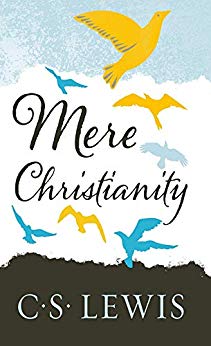C. S. Lewis’ classic, Mere Christianity, has been a challenging, interesting, and engaging book for both individuals and small groups for many decades. Whether a small group consists of Christians, a mix of Christians and non-Christians, or Christians of contrasting persuasions, Mere Christianity can be expected to focus the participants’ attention on the vital characteristics of historic Christianity, providing a fresh perspective for most and a sharp clarity for all. These study outlines and discussion questions are intended to stimulate and extend thoughts that spring from the book.
Page numbers refer to a popular edition published by HarperCollins available since 2001. It can be identified by ISBN 978-0-06-065292-0. While neither the Preface nor the Foreword are outlined or discussed here, they are both worthwhile, and a small group leader should urge the members to read them both carefully.
Feel free to log any notes or corrections here. A PDF format version of the entire text below is available here. If you have any questions, please write to me at curator@cqod.com
Many thanks to the members of the Growth Group who worked their way through this with me and thus helped to improve and refine the discussion questions.
RMA 2/6/20
Page numbers refer to a popular edition published by HarperCollins available since 2001. It can be identified by ISBN 978-0-06-065292-0. While neither the Preface nor the Foreword are outlined or discussed here, they are both worthwhile, and a small group leader should urge the members to read them both carefully.
Feel free to log any notes or corrections here. A PDF format version of the entire text below is available here. If you have any questions, please write to me at curator@cqod.com
Many thanks to the members of the Growth Group who worked their way through this with me and thus helped to improve and refine the discussion questions.
RMA 2/6/20
